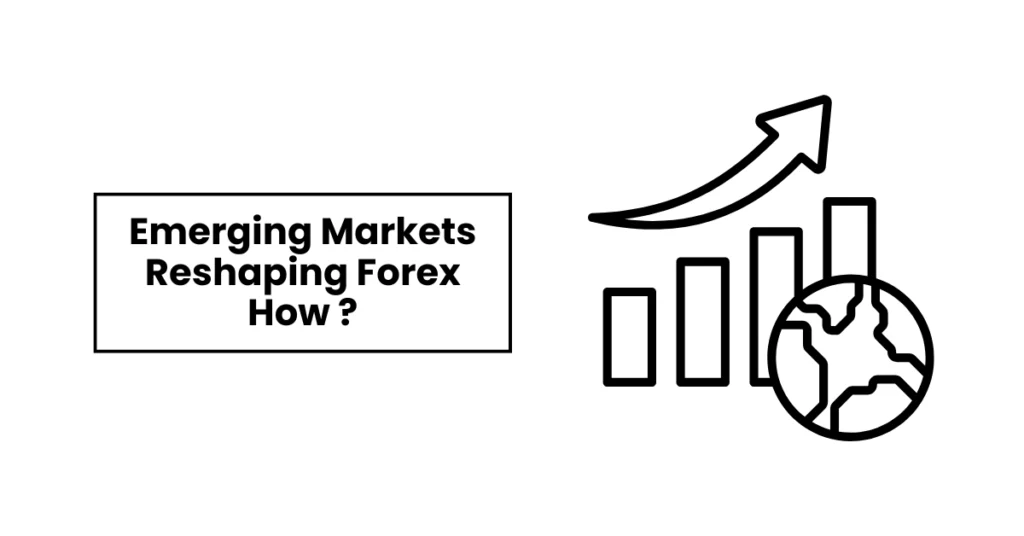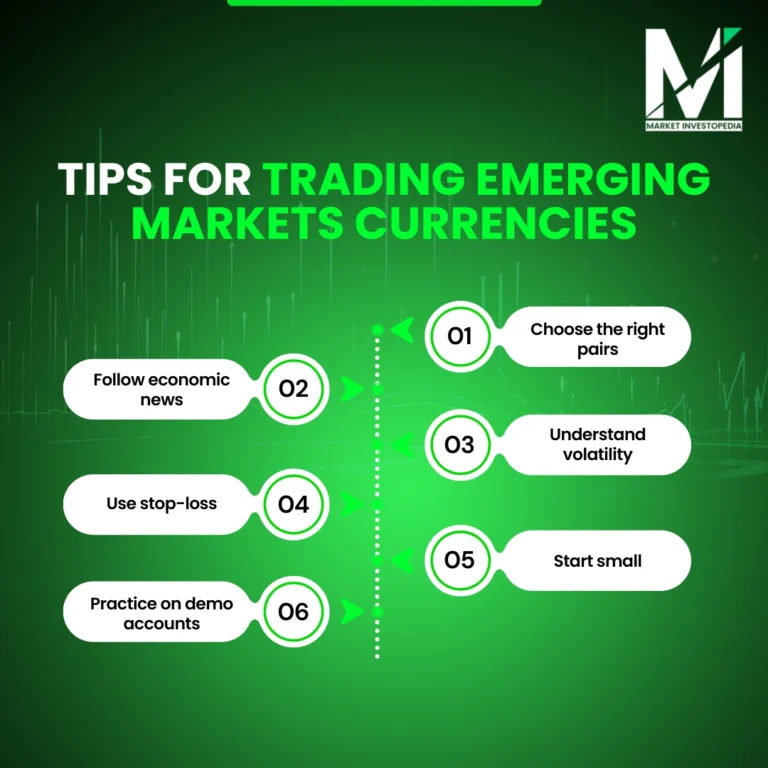How Emerging Markets Are Changing the Forex Landscape
Understanding Emerging Markets in Forex
Emerging markets refer to nations whose economies are rapidly expanding such as Brazil, India, Mexico and China, and investing in emerging economies is drawing global interest. These areas are increasingly contributing to the forex market due to the fact that their currencies are becoming stronger and are getting international interest.

A quick glance
Emerging Market Debt (EMD) refers to the debt issued by the developing world. These markets consist of government bonds or corporate bonds. EMD has a greater return, rooted in the greater risk associated with economic or political instability.
Yes, China is deemed to be an emerging market. Although it boasts a substantial economy, it remains an emerging country, lagging in certain sectors, such as income levels, financial markets, and regulatory frameworks, compared to fully developed nations.
ETFs, mutual funds, stocks, or developing country bonds are some of the ways that you can invest in rising markets. In these markets, there is high potential for growth but a greater risk; hence, diversify your investments and research extensively before investing.
Emerging markets may have greater returns to invest in than the developed markets. These economies are growing at a rapid rate, which is offering opportunities in stocks, bonds, and funds, but investors must anticipate increased risks and volatility of the market.
New economies or the developing countries are not mostly linked to the big economies of the industrial world. In contrast to the US, Germany or Japan, these countries possess smaller industrial sectors, less income, and are continuing to expand their economic infrastructure.
Yes, Mexico is an emerging market. It possesses an emerging economy and emerging industries and financial markets. Although it is more developed than some of the developing countries, it remains an emerging economy as compared to the fully developed economies.
Key Drivers Behind EM Influence
The forex world is being transformed by emerging markets due to strong forces in a booming market. We can consider the key ones that are propelling their increasing influence.
Economic Growth
Most of the EM countries are growing at a higher rate than the developed countries. This development renders their currencies more appealing to forex traders who want to have long-term prospects.
Trade and Global Demand
With the changing global trade, nations such as China, Mexico, and Brazil are emerging as important exporters. Their growing volumes of trade boost the demand of local currencies, contributing to forex volatility and trading opportunities.
Foreign Investment Flows
Investors tend to pursue greater returns in emerging markets and emerging market debt. These inflows, including interest in an emerging market bond etf, boost the local currencies, and the EM assets become significant in the global FX trends.
Combined, these drivers justify why traders around the world are increasingly taking notice of emerging market currencies.
Currency Trends in Emerging Markets
The emerging market currency is one of the largest trends in the forex market today. In addition to the U.S. dollar and euro, traders are increasingly focusing on such pairs as USD/BRL (Brazilian real), USD/MXN (Mexican peso), and USD/TRY (Turkish lira). These currencies are becoming popular as the world changes its demand, and trends often echo flows in a global emerging markets fund.
Carry Trade Opportunities
The attractive carry trade opportunities are presented by higher interest rates in most emerging economies. Traders borrow in low-yield currencies, like the Japanese yen, and invest in higher-yielding EM currencies to earn the rate difference.
Impact of Dollar Weakness
As the U.S. dollar depreciates, the emerging market currencies tend to appreciate. This movement attracts more traders to EM pairs and to an emerging markets fund, increasing the trading volumes and liquidity.
Currency Volatility
Meanwhile, currency volatility is an unchanging characteristic. Sharp swings may result due to sudden changes in policy, inflation or geopolitical risk spikes. This is essential to risk management before trading EM pairs for beginners.
The Role of De-Dollarisation
One of the significant changes in the forex market is the de-dollarisation trend. This implies that certain nations are lessening their dependence on the U.S. dollar in trade and reserves.
Local Currencies in Trade
Countries such as China, Brazil and Russia are increasingly transacting in their own currencies in cross-border transactions. This provides power and presence to the emerging market currencies in international trade.
Rise of Digital Currencies
The development of central bank digital currencies (CBDCs) is also contributing to the emerging markets paying international payments more quickly and cheaply.
To traders, this trend is an indication that forex opportunities are growing outside the dollar. Monitoring these changes can assist in identifying new trading opportunities in time.
Opportunities and Risks for Traders
Emerging market currencies can be fun to trade since they tend to generate larger price swings than the major pairs such as EUR/USD or GBP/USD. To the novice, this translates to increased opportunities to make money in case the market is favourable to them.
Opportunities
Diversification is one of the major benefits. The inclusion of EM currency pairs like USD/BRL or USD/MXN in a trading plan will reduce the dependence on a few major currencies. Most of the emerging economies also have higher interest rates that provide lucrative carry trade opportunities. The increasing global trade and investment inflows into these countries provide an additional impetus, and their currencies become more active in the forex market. For longer-term allocation, many traders also look at emerging markets funds, an emerging markets equity fund, a global emerging markets fund, the fidelity emerging markets index fund, an emerging markets fund or a simple emerging market fund when they are not trading FX directly; researching the best emerging market funds or even the best emerging markets fund can complement a currency strategy.
Risks
The flip side is volatility. Emerging markets are more susceptible to political changes, inflation or sudden government interventions. Such shocks may lead to a sharp movement of currency values within a short period. Another problem is liquidity–not all EM pairs will trade as easily as majors, resulting in broader spreads.
The most important thing to do as a beginner is to take risks. Losses can be limited by using such tools as stop-loss orders, smaller position sizes, and demo accounts. Traders will be able to enter the emerging market forex with confidence and safeguard their capital by weighing the opportunities and risks.
Practical Tips for Trading EM Currencies
Trading in emerging market currencies can be rewarding, but it needs additional attention. The following are some easy tips to start with:

Choose the right pairs
Focus on liquid pairs like USD/BRL (Brazilian real), USD/MXN (Mexican peso), or USD/TRY (Turkish lira). These tend to be more traded.
Follow economic news
Watch the emp schedule, inflation, interest rates, and trade data. These reports tend to push EM currencies.
Understand volatility
Swings are likely to be larger than in major pairs. One should always be ready to counter any changes in the market.
Use stop-loss orders
Guard your capital by establishing exit points. This is especially important in unstable EM markets.
Start small
Start with smaller positions until you know how these currencies respond to news and world trends.
Practice on demo accounts
Test strategies in a safe environment before trading with real money.
These steps will help beginners to trade emerging market forex more confidently and minimise unnecessary risks.
Wrapping Up
Emerging markets are no longer on the periphery; they are transforming the forex scene with rapid expansion, stronger currencies and increased international trade. To traders, it is an increase in opportunities and increased risks that need intelligent planning. According to MarketInvestopedia, the most important thing to know when trading EM currencies is the economic drivers and volatility. Novices are advised to keep up with the times, practice, and adjust to the evolving trends in the world. You can reach out to us at any time, in case you want to learn more or need some guidance on how to start.

